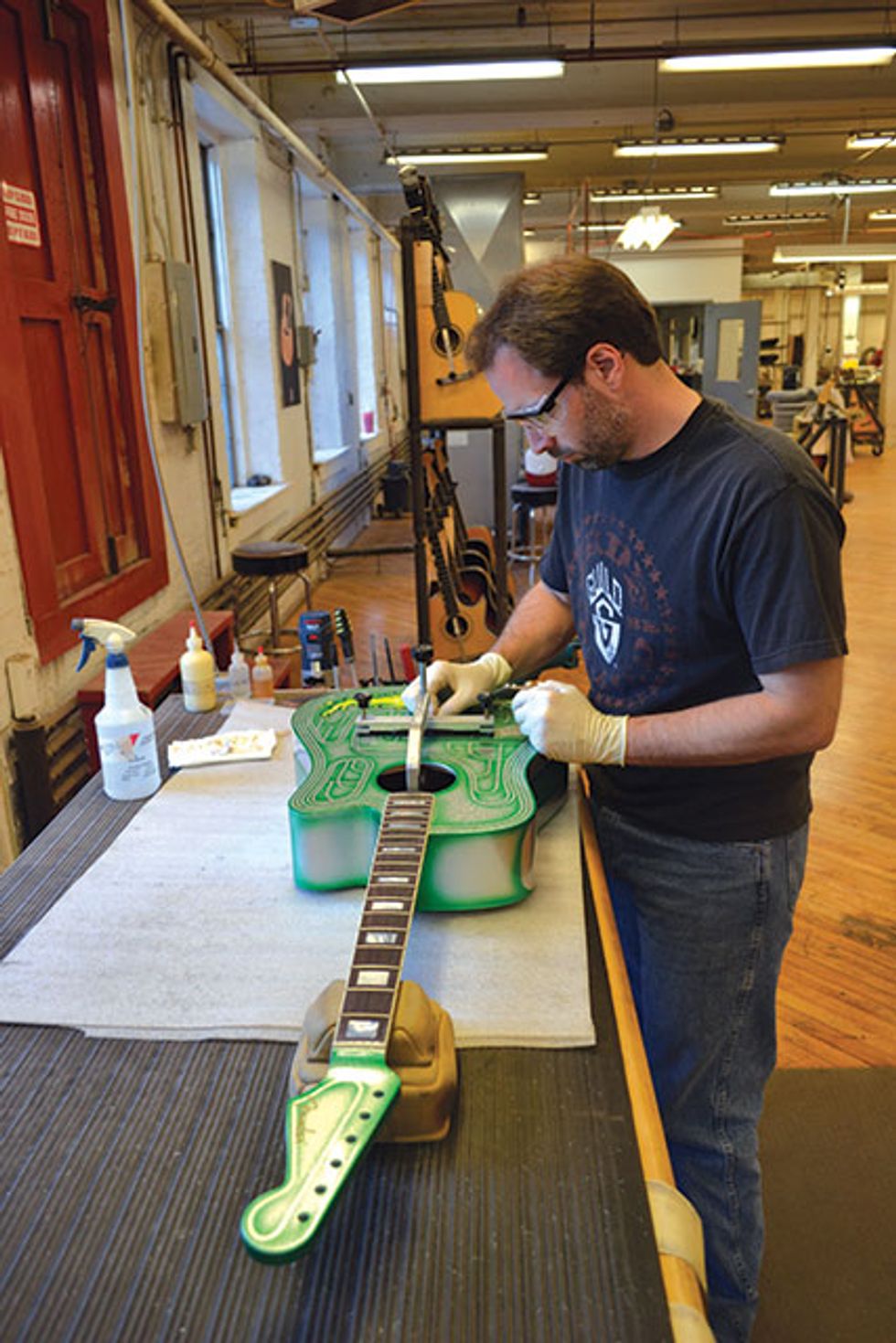
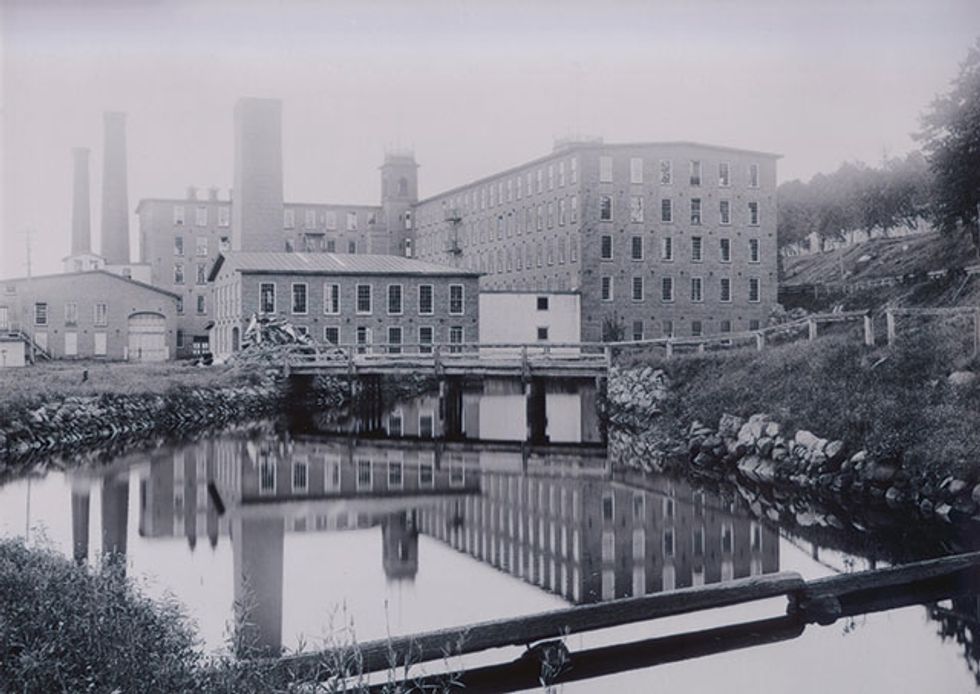

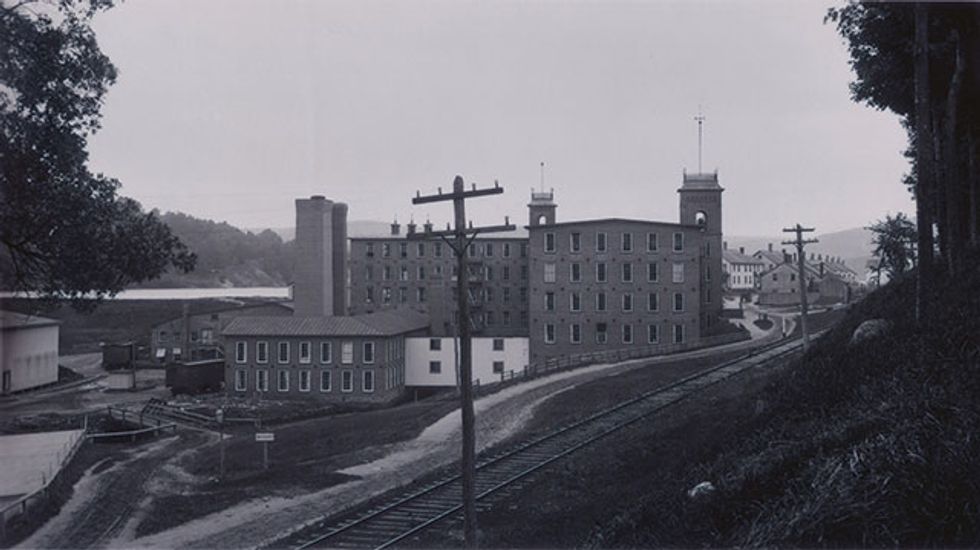
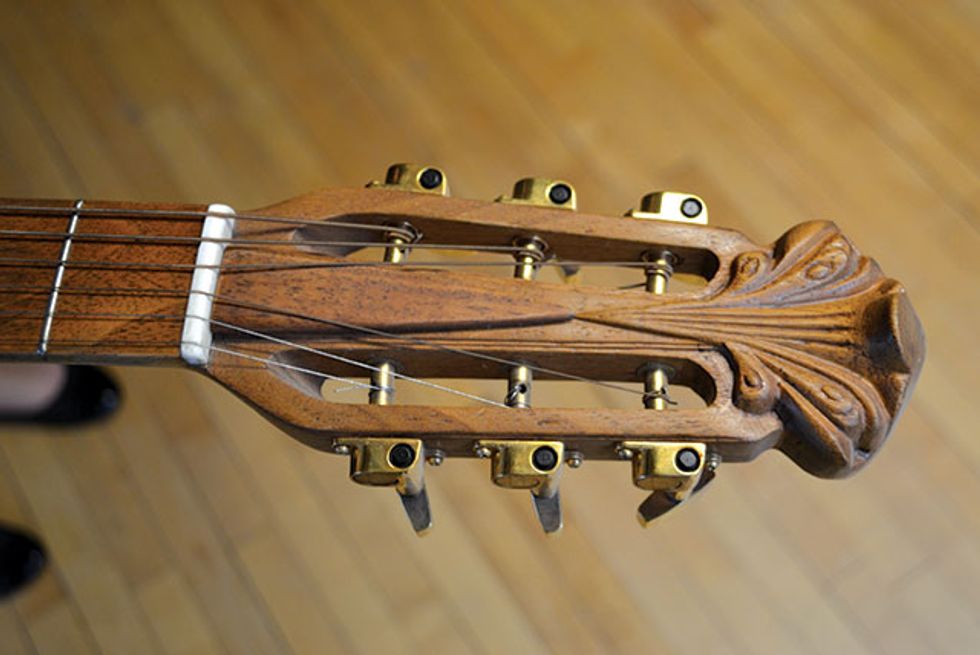
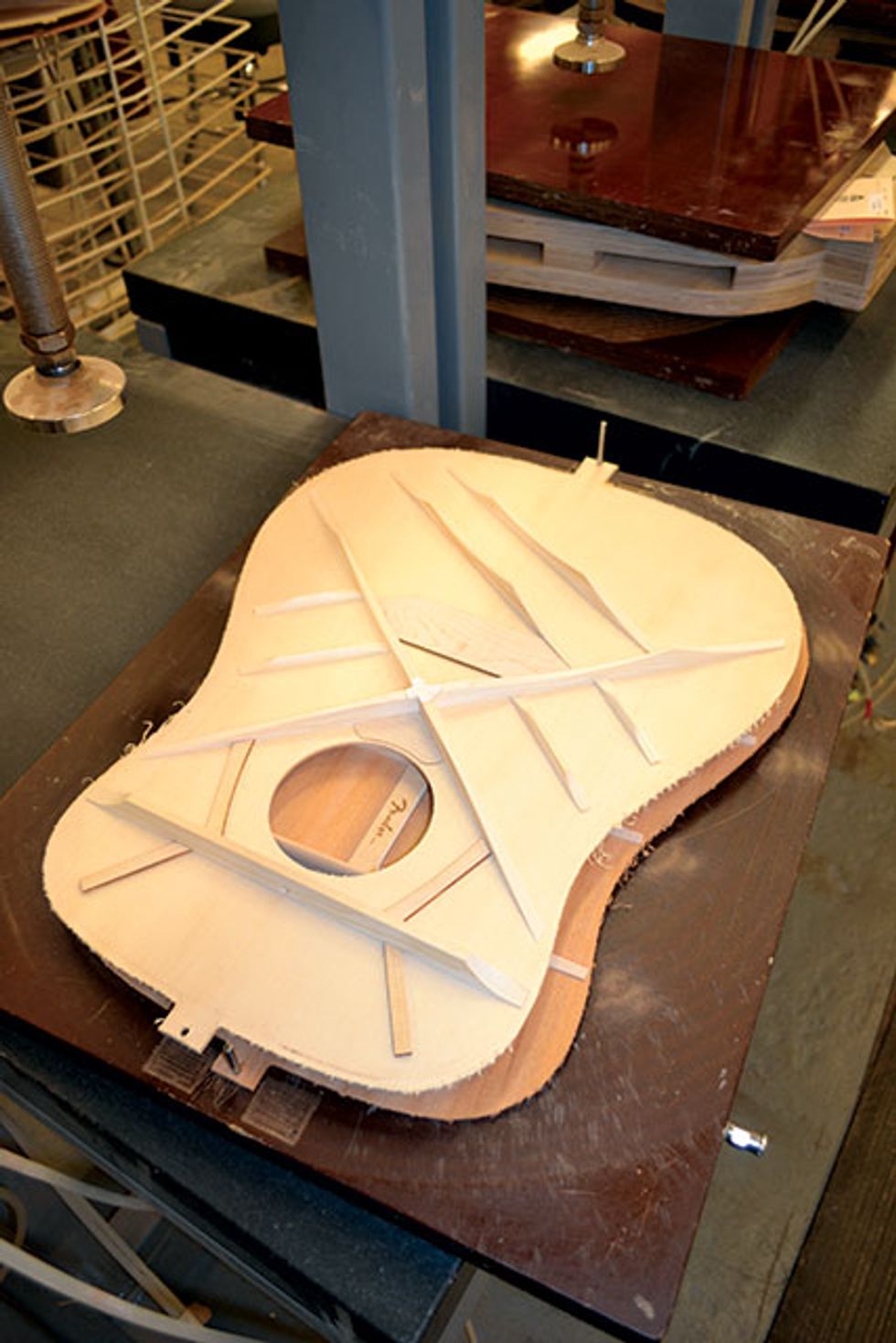
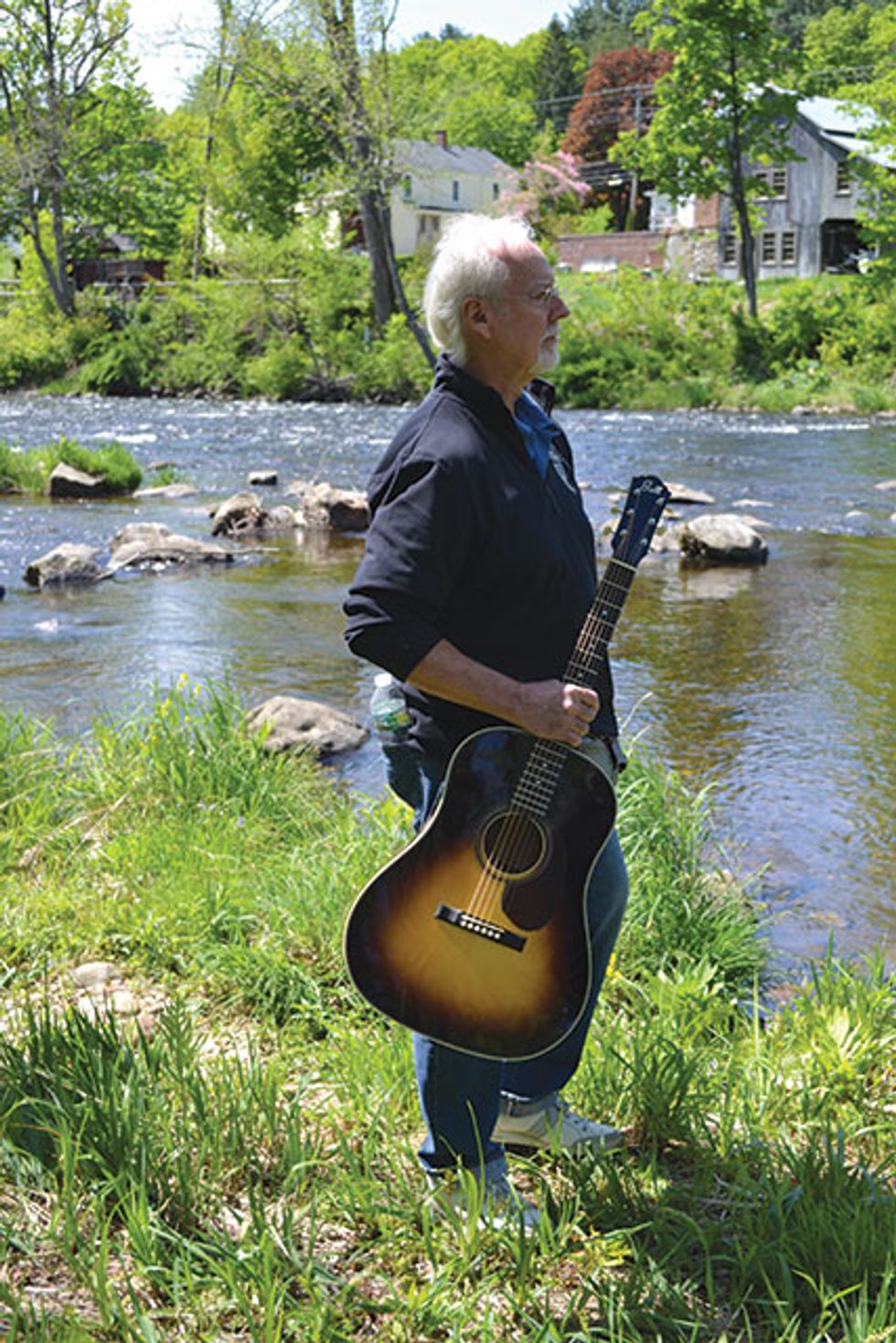
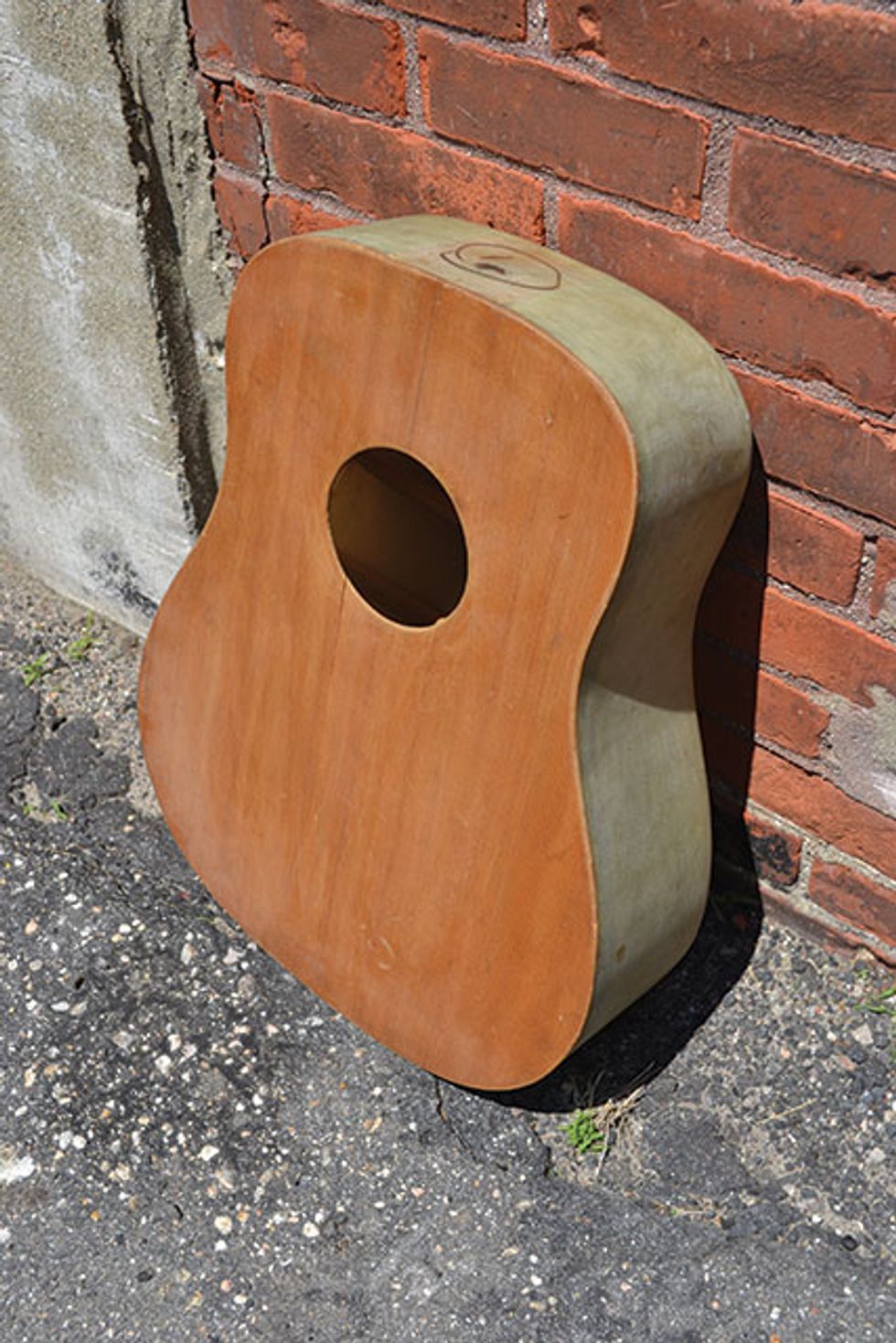
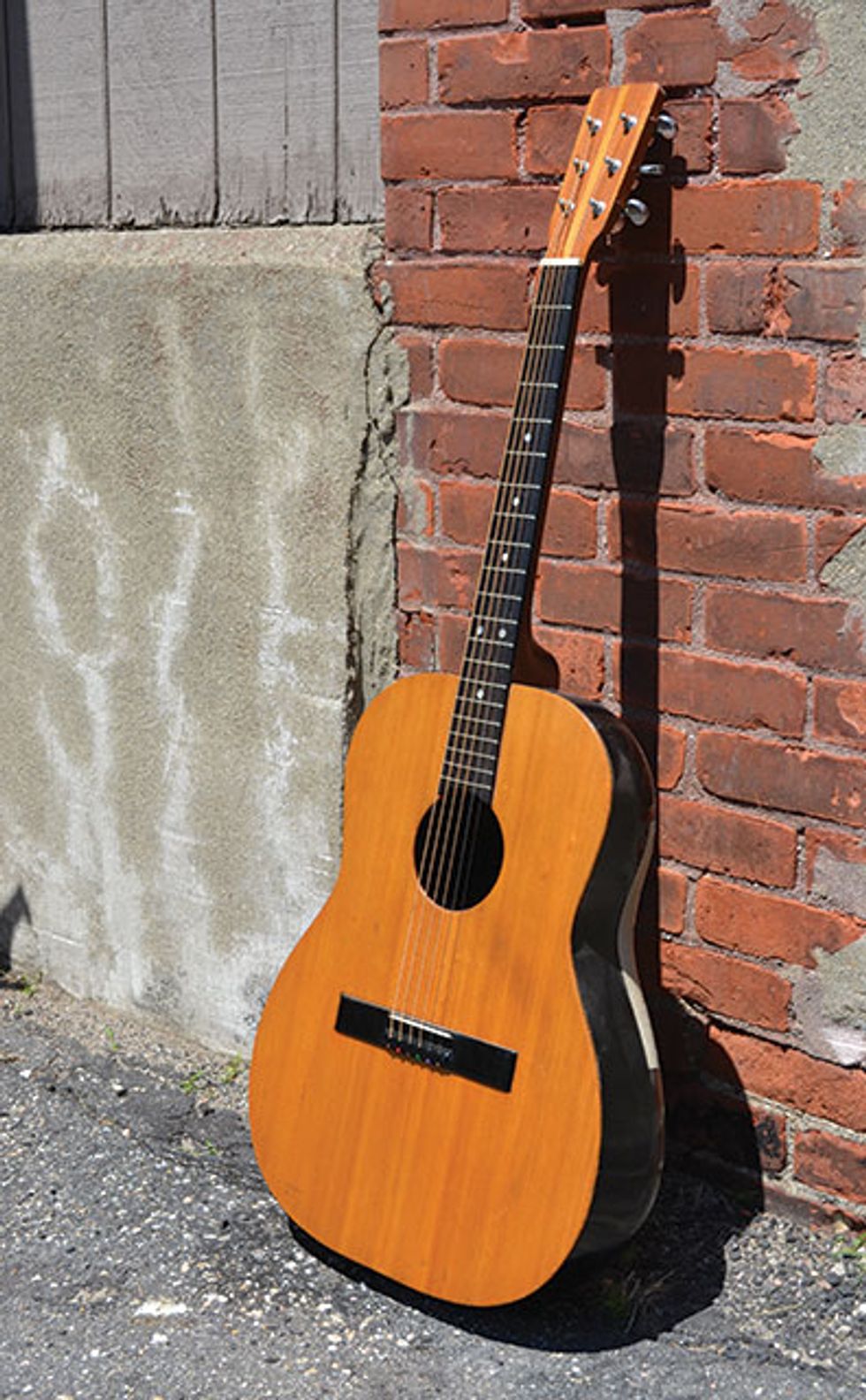
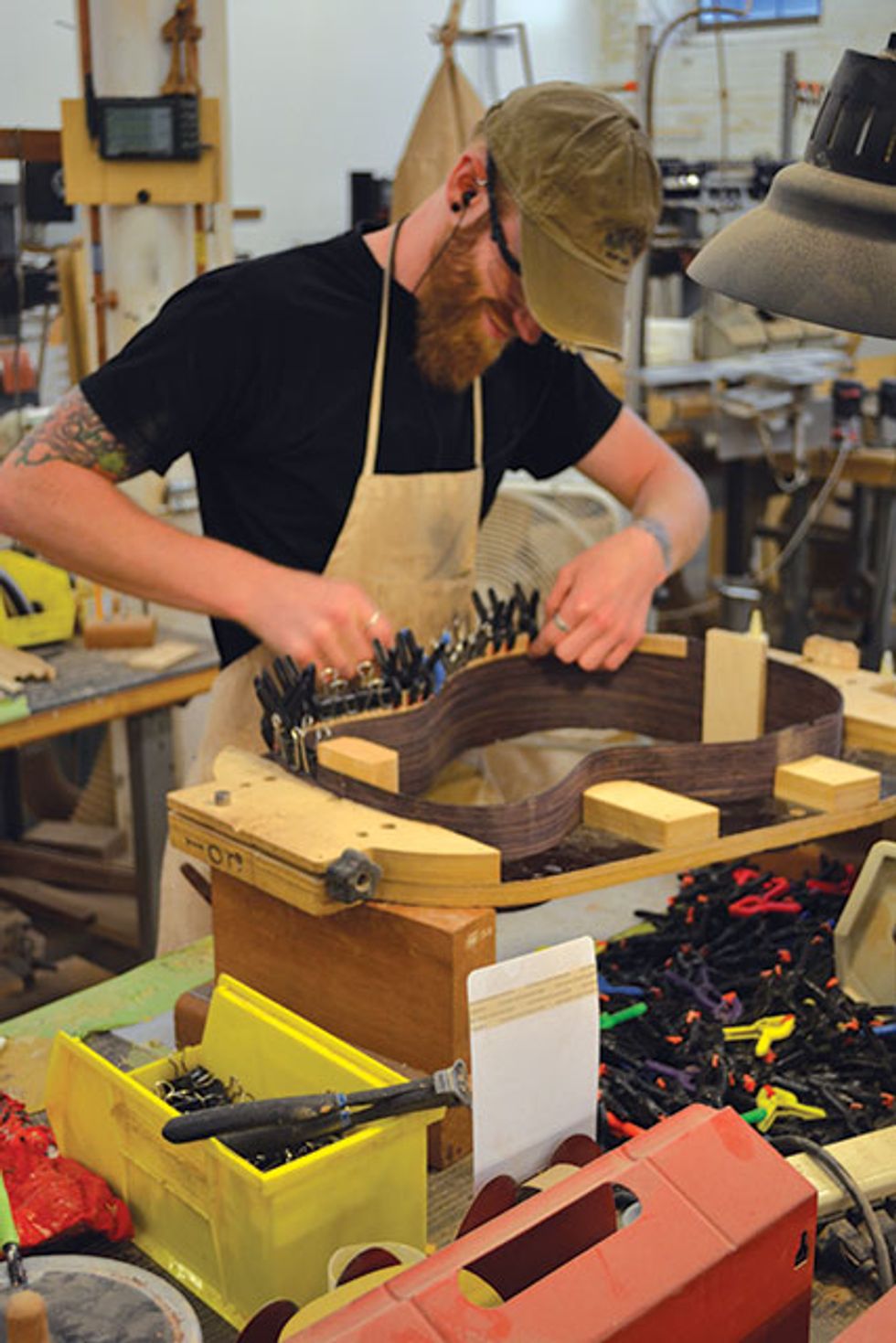
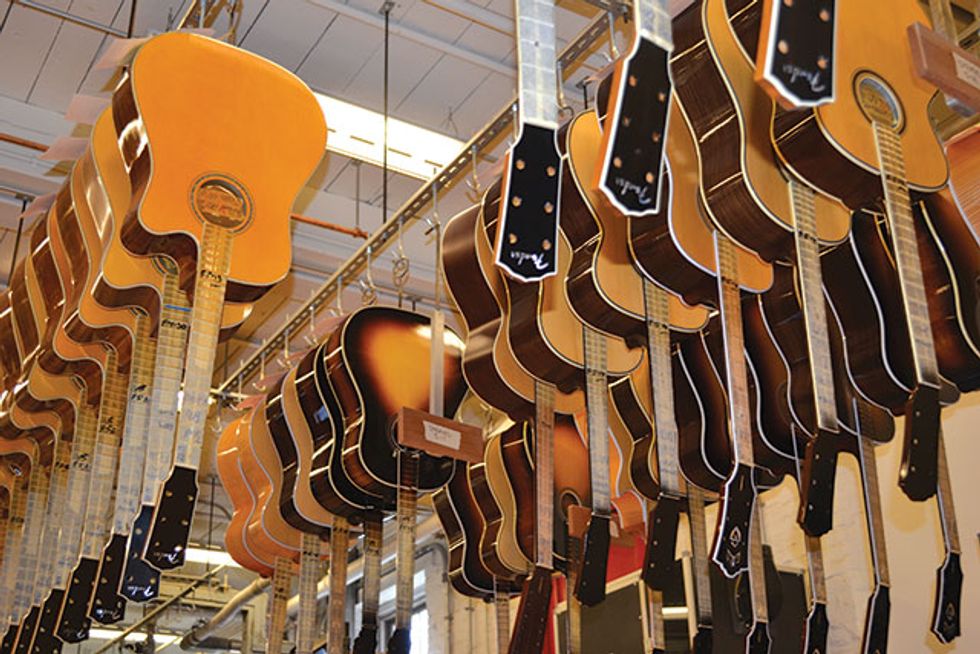

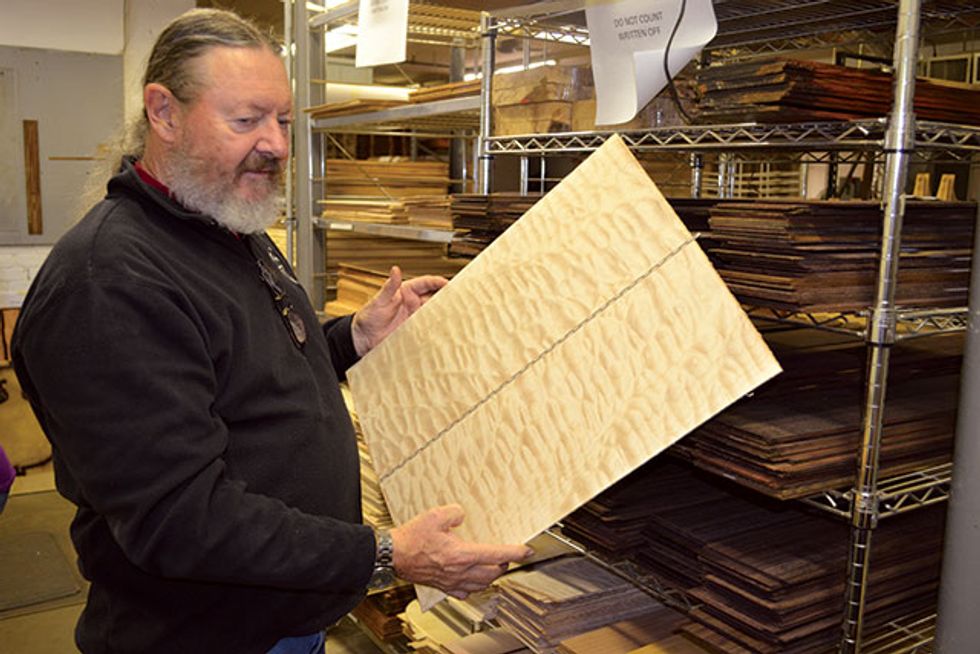
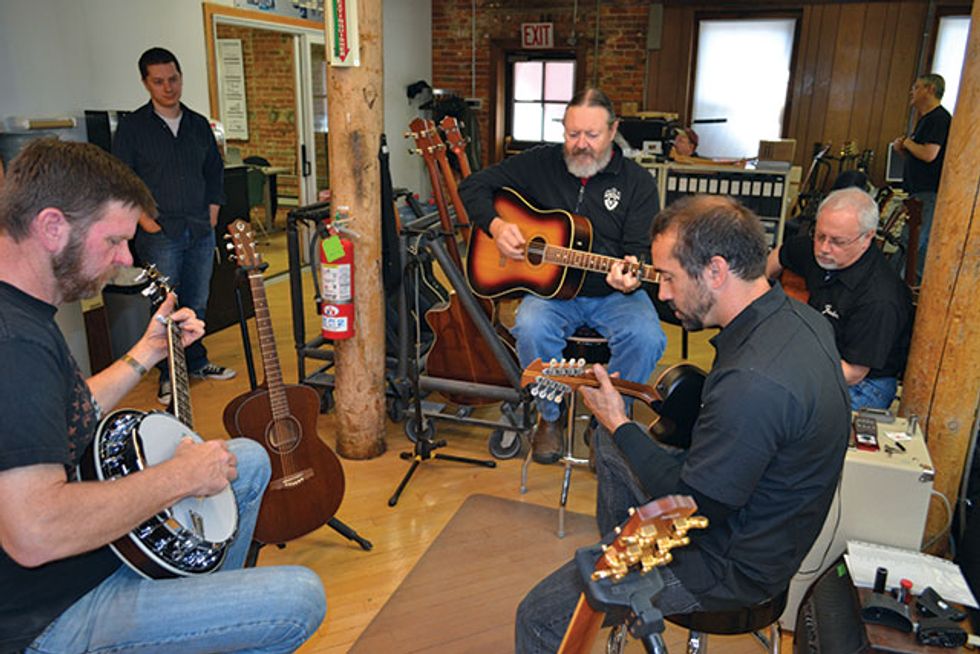
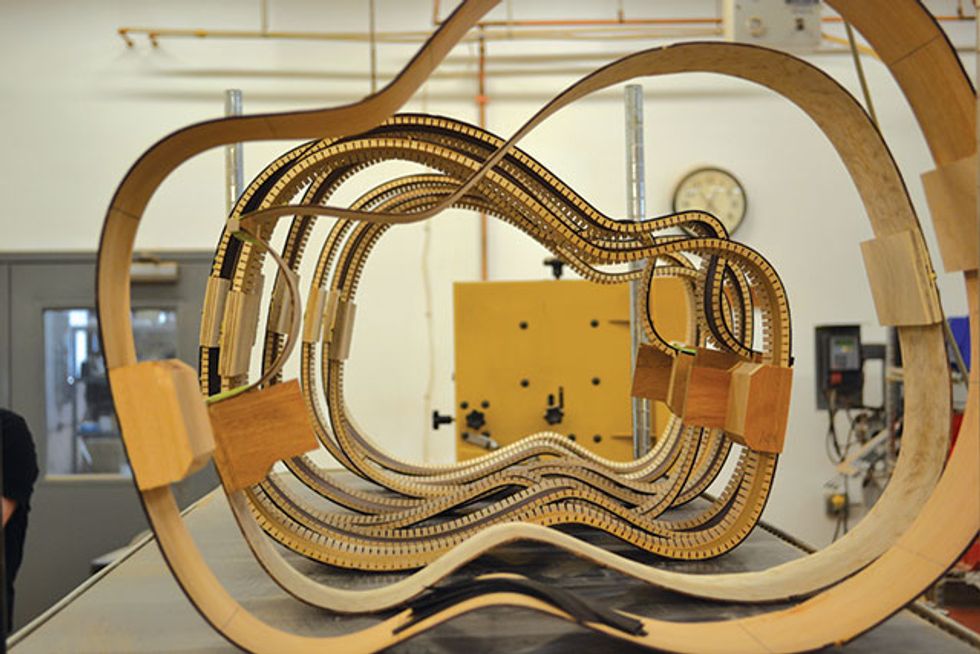
Hang out with the folks who work at the beautiful brick factory in New Hartford, Connecticut, where Fender Acoustic Custom Shop, Guild, and Ovation flattops are built and, before long, the ghost stories start to fly. Tales of night watchmen, phantasmal apparitions in the corners, and whistling, invisible strangers in the wee hours, are traded readily. And it’s little wonder—the facility was erected on the shores of the Farmington River before the Civil War, and by various accounts has been a uniform mill and a sewing-machine factory, among others things. In short, a lot of industrious folks have walked these halls.
Since 1967, the New Hartford factory has been all about guitars. But even now it seems like a bridge between worlds—and it’s certainly no less industrious for it. Here, carbon-fiber guitars take shape alongside small-batch acoustics built with old-world and computer-based methods. And in the process, new chapters are being written in the annals of some legendary guitar brands.
After leaving Westerly, Rhode Island, almost two decades ago, Guild is back in New England. And the design team for this legendary brand is now helmed to a significant extent by the legendary Ren Ferguson, who spearheaded Gibson’s acoustic renaissance. Fender—which made its first concerted (if largely unsuccessful) foray into acoustics in the early ’60s with Rickenbacker design legend Roger Rosmeisel at the helm—has again dived headlong into the business of acoustic guitars, this time with Ferguson and acoustic lutherie veteran Tim Shaw overseeing the works. And Ovation—whose aerospace- and acoustic-electric-guitar-pioneering forefather, Charles Kaman, first made the New Hartford facility a guitar factory in 1967—stands poised to take the brand in new directions.
The creative energy and focus around the New Hartford facility is impressive. This is clearly not an operation designed to cash in on nostalgia or leverage famous brands in an effort to move mediocre instruments. Soon after taking the job in January of 2012, Ferguson had already designed and unveiled a whole new line of Guilds, the Orpheum series, which include—among other ’30s-inspired designs—a beautiful, sonorous, and barn-rattlingly powerful 12-fret slope-shouldered dreadnought
Meanwhile, Fender—intent on building more than rebranded Guilds—is designing flattops that honor the misunderstood and often underappreciated legacy of the Rosmeisel-era acoustics with guitars that, in some cases, are tailored specifically for those who primarily play electric. And from what we’ve seen, felt, and heard, the notion of fretting an E-major chord on a C-profiled Stratocaster neck and generating the booming, balanced output of a good dreadnought is a musical idea we could definitely get used to.
And Ovation is simultaneously looking ahead and capitalizing on its experience as one of the most consistently groundbreaking companies in the industry. Further, a young, eager musical freak of a brand manager named Jason Barnes is working with a veteran staff of guitar builders—many into their fourth decade of building Ovation and Adamas guitars—to keep the brand at the cutting edge of playability and exploratory design while also taking advantage of the materials, talent, and experience behind the new crew working on Fender and Guild guitars in New Hartford.
If this all sounds a bit like some kind of mad luthiers’ summer camp, well, that sentiment isn’t too far off the mark. This is a hardworking, spirited, often hilarious gang that hangs together, talks shop, and even launches into lunchtime jam sessions around the front office if you give them five seconds of breathing room. And as impressive as many of these guys are as luthiers, they’re killer players, too. But once they’re on the clock, this is a determined, inexhaustible bunch fired up about the new convergence of talent and the instruments it’s producing. At any given moment, you can find Ren Ferguson digging in the wood room, tinkering with inlay, or looking over the shoulder of a builder as they discuss a better approach to some minute step in the manufacturing process. It all adds up to a very promising future for three brands that deserve to remain acoustic industry fixtures. If you love the acoustic guitar in any measure, it’s not hard to be thrilled and intrigued about what might emerge from this buzzing hive of guitar-building energy.
See photos from our trip inside the factory:



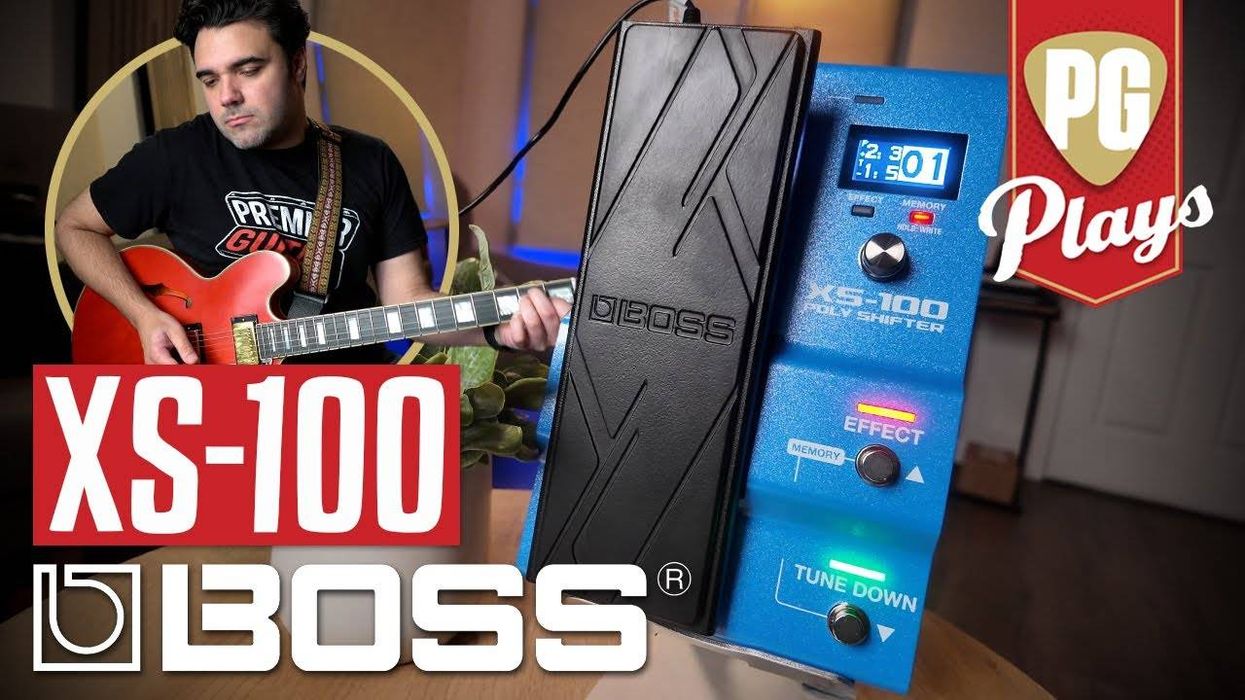







![Devon Eisenbarger [Katy Perry] Rig Rundown](https://www.premierguitar.com/media-library/youtube.jpg?id=61774583&width=1245&height=700&quality=70&coordinates=0%2C0%2C0%2C0)





